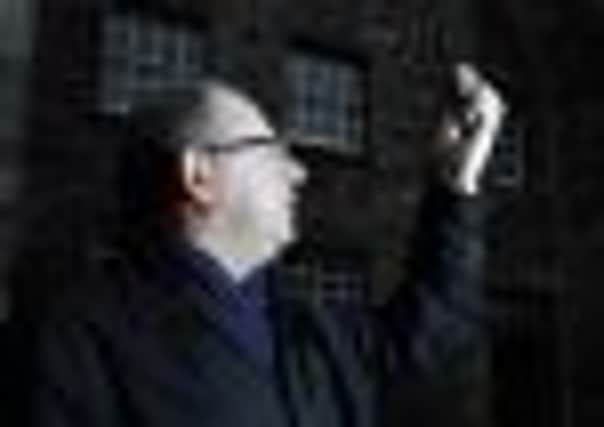The explosive history of Canongate’s cannonball


Now one of the oldest buildings in the Royal Mile has thrown up another treat for historians – a cannonball thought to have been fired in one of the city’s bloodiest battles.
Archaeologists carrying out the dig behind Acheson House in the Canongate believe it was likely to have been used during one of the ferocious assaults on the Royal Mile and Edinburgh Castle during the 16th century.
Advertisement
Hide AdAdvertisement
Hide AdThe cannonball, the only one from that period to be recovered in the city, is thought to have battered one of the buildings in the area, none of which have survived, as it has been flattened on one side. City archaeologist John Lawson told The Scotsman it may have been fired during the 1544 siege led by the Earl of Hertford, who went on a trail of destruction around the city after seizing control of the crucial Netherbow Gate area, just up from the site of Acheson House.
The cannonball was found during a dig in a hidden walled garden which is being restored as part of a multi-million-pound overhaul of a long-forgotten townhouse that has had a colourful and varied history since it was built in the 17th century. It is being converted into offices for Edinburgh World Heritage while its garden is being restored to the original Saltire-shaped vision mapped out by town planner Patrick Geddes to celebrate his transformation of the Old Town.
Other evidence of occupation of the site from the 16th century has been uncovered, including medicine bottles, shards of pottery, buttons and a clay pipe.
Mr Lawson said: “The cannonball is quite exciting because we know it was of the type used in the 16th century, but it is the first that has been recovered in the city itself.
“There were some pretty big sieges of Edinburgh Castle and the Royal Mile in the 16th century. There was also the Lang Siege of Edinburgh Castle, which ended in 1573, so it could have been fired during that as well, but we know this area would have been under siege at some point in the 16th century.
“Acheson House is really so significant because it is one of the few surviving buildings from this era anywhere in the city.”
Acheson House, which had lain abandoned for two decades until a rescue package was agreed by the city council last year, was built in 1633 for Sir Archibald Acheson, secretary of state for Charles I.
Advertisement
Hide AdAdvertisement
Hide AdThe building was bought by merchant Patrick Wood in 1636 and was later home to the Incorporation of Bakers, but by 1851 it is thought around 300 people were living in Acheson House and neighbouring buildings in slum conditions and it was notorious as a brothel dubbed the Cock and Trumpet.
After a series of letters to The Scotsman demanding action over its condition, the property was bought by the Marquess of Bute in 1935 and, after a full restoration, it became the parish house for the Canongate Kirk on the other side of the Royal Mile.